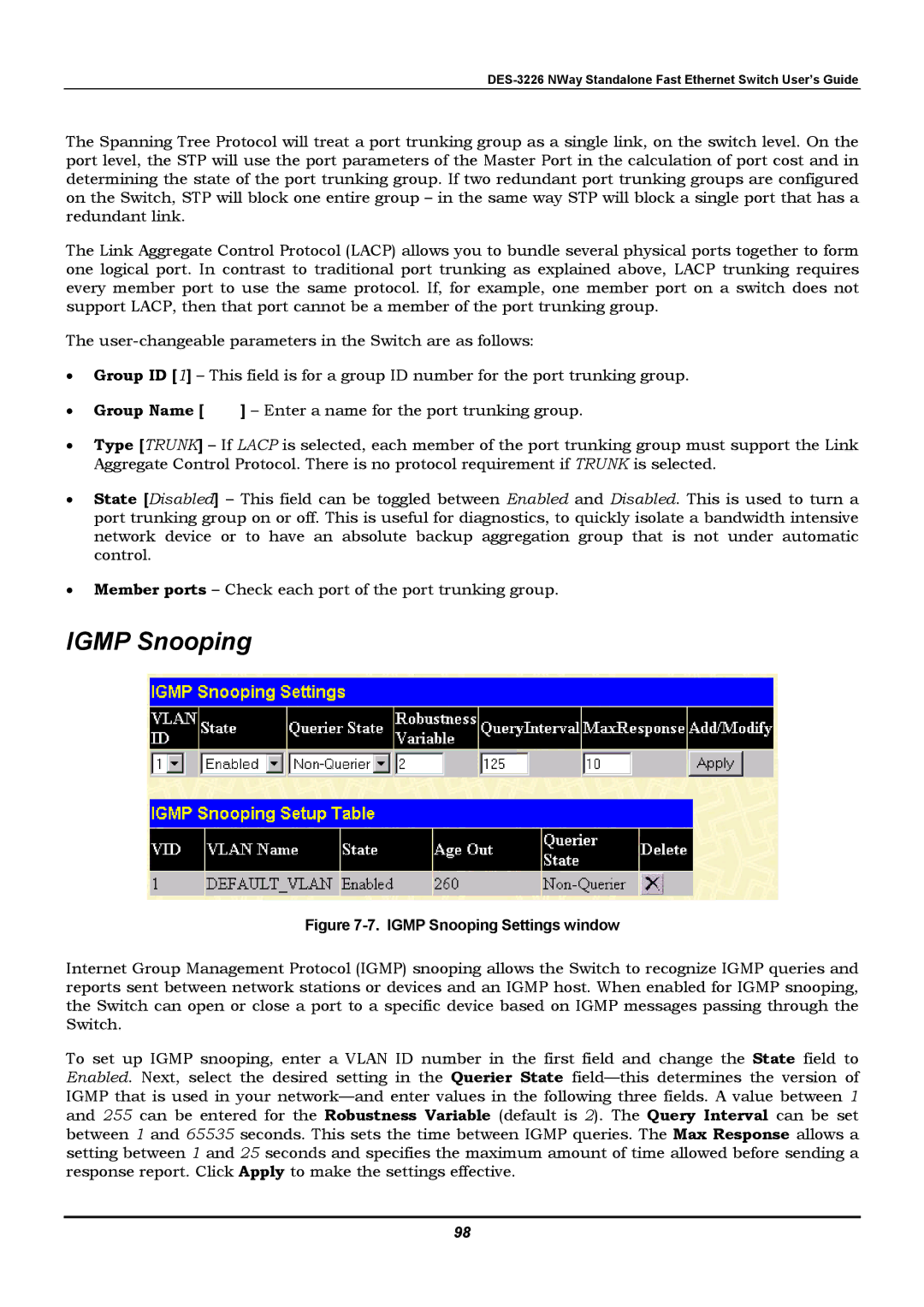
DES-3226 NWay Standalone Fast Ethernet Switch User’s Guide
The Spanning Tree Protocol will treat a port trunking group as a single link, on the switch level. On the port level, the STP will use the port parameters of the Master Port in the calculation of port cost and in determining the state of the port trunking group. If two redundant port trunking groups are configured on the Switch, STP will block one entire group – in the same way STP will block a single port that has a redundant link.
The Link Aggregate Control Protocol (LACP) allows you to bundle several physical ports together to form one logical port. In contrast to traditional port trunking as explained above, LACP trunking requires every member port to use the same protocol. If, for example, one member port on a switch does not support LACP, then that port cannot be a member of the port trunking group.
The
•Group ID [1] – This field is for a group ID number for the port trunking group.
• Group Name [ | ] – Enter a name for the port trunking group. |
•Type [TRUNK] – If LACP is selected, each member of the port trunking group must support the Link Aggregate Control Protocol. There is no protocol requirement if TRUNK is selected.
•State [Disabled] – This field can be toggled between Enabled and Disabled. This is used to turn a port trunking group on or off. This is useful for diagnostics, to quickly isolate a bandwidth intensive network device or to have an absolute backup aggregation group that is not under automatic control.
•Member ports – Check each port of the port trunking group.
IGMP Snooping
Figure 7-7. IGMP Snooping Settings window
Internet Group Management Protocol (IGMP) snooping allows the Switch to recognize IGMP queries and reports sent between network stations or devices and an IGMP host. When enabled for IGMP snooping, the Switch can open or close a port to a specific device based on IGMP messages passing through the Switch.
To set up IGMP snooping, enter a VLAN ID number in the first field and change the State field to Enabled. Next, select the desired setting in the Querier State
98
